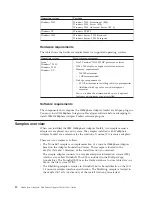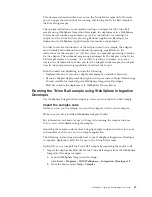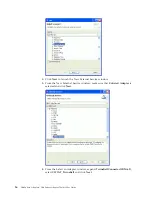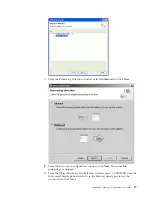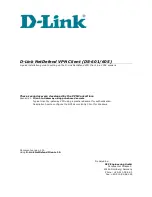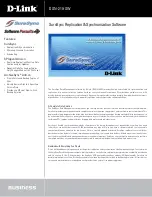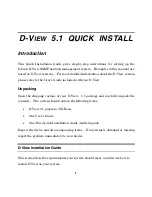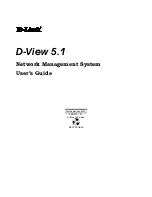
The development process using the IBM WebSphere Adapter Toolkit includes the
following as shown in the illustration:
1.
Run the New JCA Resource Adapter Project wizard.
The wizard generates a resource adapter deployment descriptor and code. The
code can include sequence of calls, log and trace messages and comments.
2.
Use the Resource Adapter Deployment Descriptor Editor to configure your
deployment descriptor.
3.
Implement the code to correctly interface with your enterprise information
system (EIS).
4.
Export the resource adapter as a resource adapter archive (RAR) or enterprise
application archive (EAR) file.
The purpose of this documentation
Adapter development requires a great deal of software engineering, which varies
from customer to customer. The process of integrating adapter functionality into
your business processes will require you to design, build and test the solution that
utilizes the adapter. The purpose of the WebSphere Adapter Toolkit documentation
is to lay out the requirements of the architecture and provide guidance on how
and when to implement the various facets of it, so that you can apply your
engineering discipline to the adapter-specific requirements, capabilities and
architecture.
IBM WebSphere Adapter Toolkit technology overviews
The IBM WebSphere Adapter Toolkit helps developers implement the Adapter
Foundation Classes, which establish a WebSphere Adapter standard for building
resource adapters that conform to the Java 2 Connector Architecture (JCA) 1.5
specification.
IBM WebSphere Adapters
An IBM WebSphere Adapter implements the Java 2 Enterprise Edition (J2EE)
Connector architecture (JCA), version 1.5. Also known as resource adapters or JCA
adapters, WebSphere Adapters enable managed, bidirectional connectivity between
enterprise information systems (EIS) and J2EE components supported by multiple
server runtime environments, including WebSphere Process Server and WebSphere
Application Server.
IBM WebSphere adapters support outbound request processing and inbound event
processing.
Note:
IBM WebSphere adapters support outbound and inbound processing for
WebSphere Process Server and
outbound processing only
for WebSphere Application
Server.
Outbound processing refers to a process in which request data flows from a client
application to the EIS. In an outbound processing scenario, the adapter acts as the
connector between the application component and the EIS. The adapter provides a
set of standard operations, which process either after-image or delta style business
objects. An outbound request can read data from or write data to the EIS.
Inbound event processing refers to a process that is initiated by an event on the
EIS. In inbound event processing the adapter converts events generated from the
EIS into business objects and sends the business object to the client application.
2
WebSphere Adapters: WebSphere Adapter Toolkit User Guide
Summary of Contents for WebSphere Adapters
Page 2: ......
Page 6: ...iv WebSphere Adapters WebSphere Adapter Toolkit User Guide...
Page 220: ...214 WebSphere Adapters WebSphere Adapter Toolkit User Guide...
Page 224: ...218 WebSphere Adapters WebSphere Adapter Toolkit User Guide...
Page 225: ......
Page 226: ...Printed in USA...


















